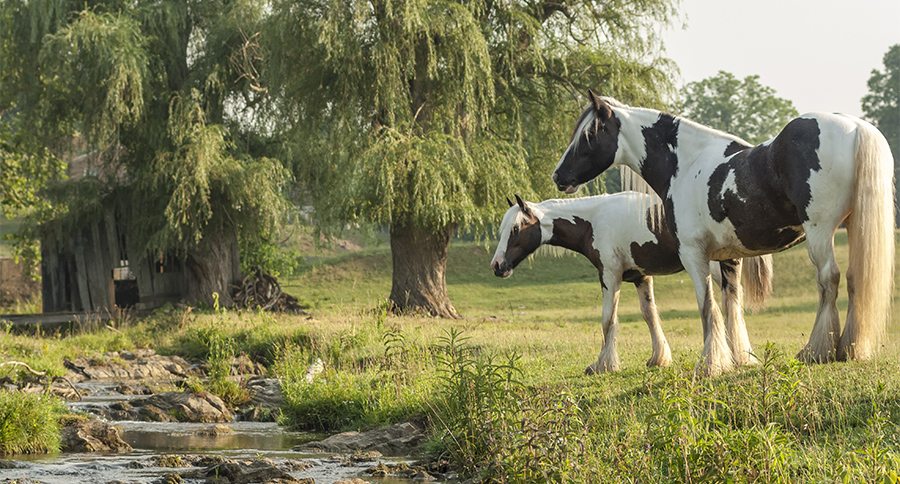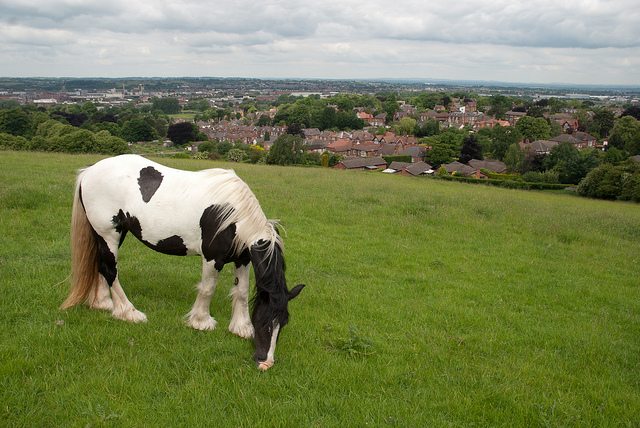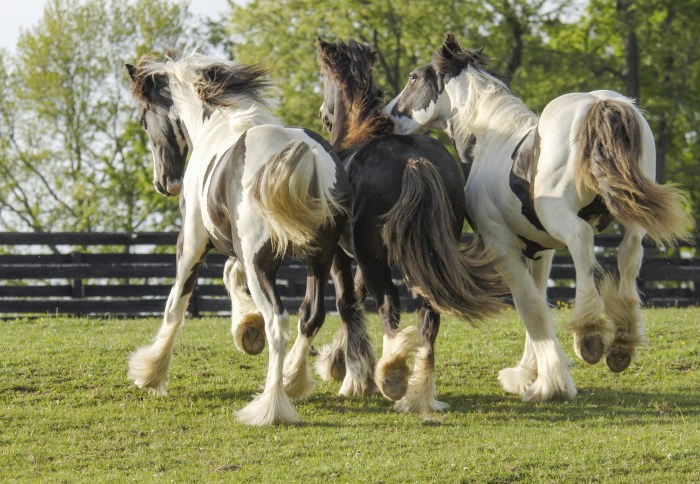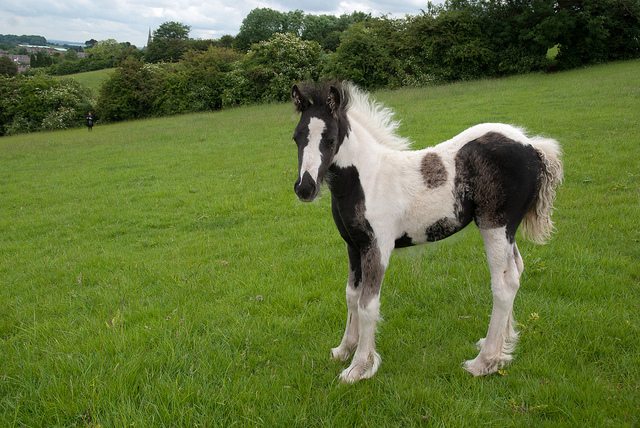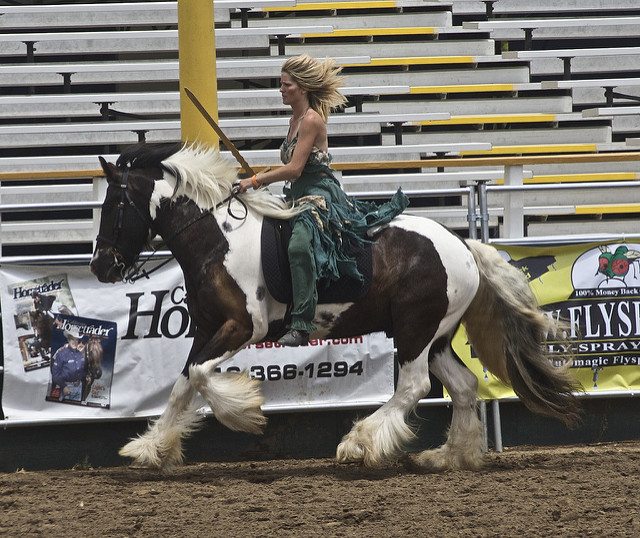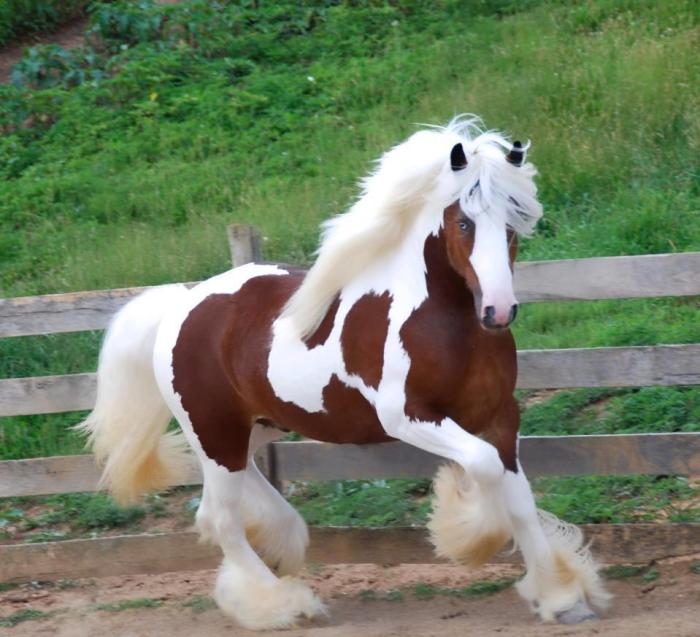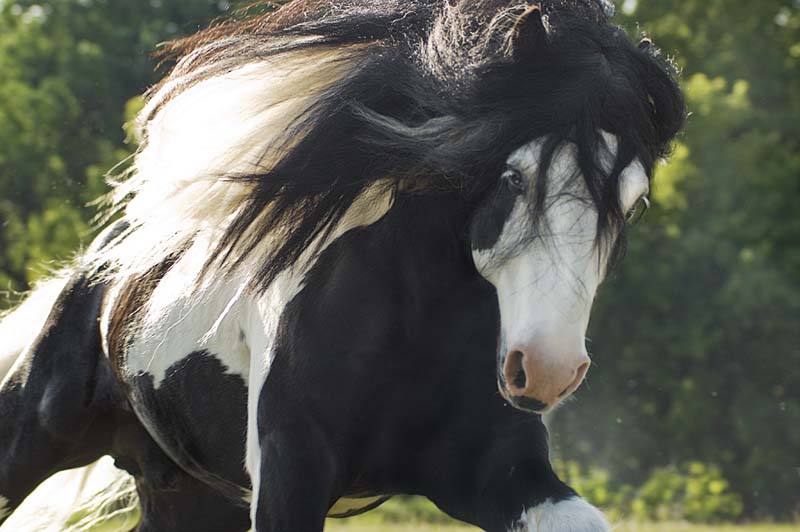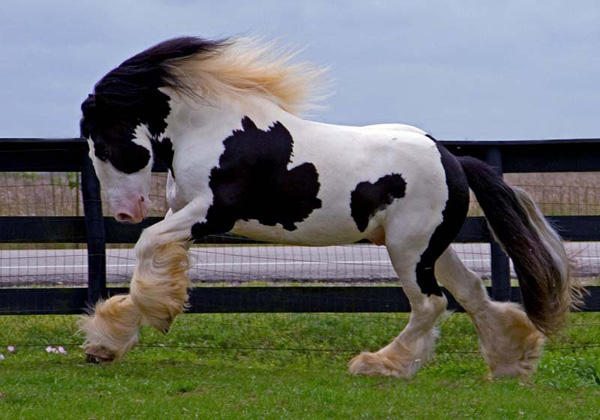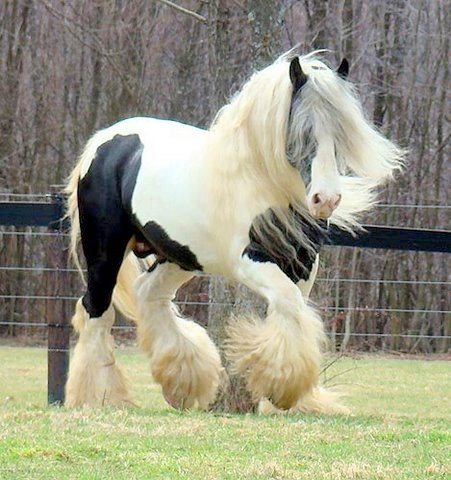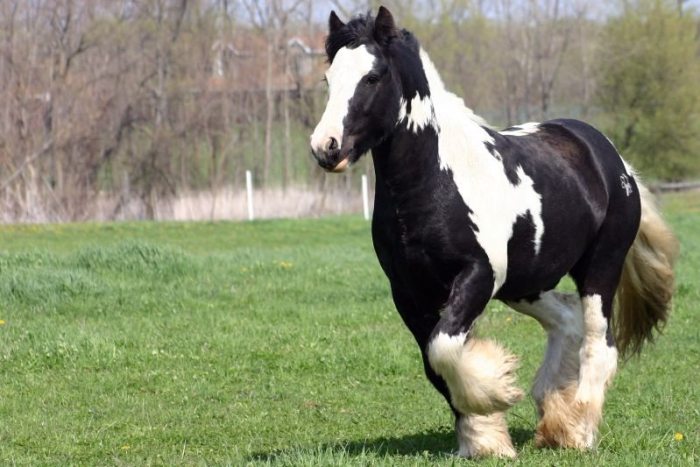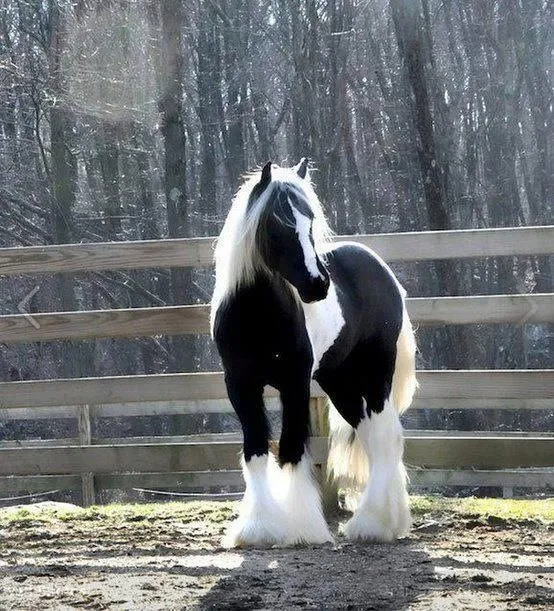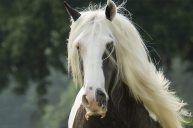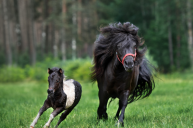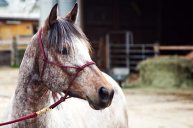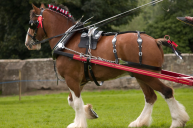With their amazing manes and tails, and heavy leg feathering, Gypsy Vanner horses look like something out of a fairy tale.
This breed of horse is from the island of Ireland. Fun fact: From about 1850 traveling people in the British Isles began to use a distinct type of horse to pull their vardos, the caravans in which they had just begun to live and travel. The breed was refined in the years after World War II and before it was imported in 1996 to the United States.
In April of 1998, the horse who was now The Gypsy King arrived in America. He was one of the first two foundation sires of the Gypsy Vanner Horse in North America.
The Gypsy Vanner is perhaps one of the most majestic horse breeds. Gypsy Vanners are known for being strong, kind, calm, and easily trainable.
They're also known for their brilliant coat colors - many of them are piebald - and, of course, for their dramatic leg feathering, and long manes and tails.
What about body type? The hind legs of the Gypsy Horse should display proper angulation for a pulling horse, although not to the degree found in larger feathered draught breeds such as modern Shire horses and the Clydesdale. Unlike the equine conformational flaw of cow-hocked ness, where only the lower leg is turned outward, a Gypsy Horse's entire hind leg is set so as to angle outward. As a result, when the hind legs of a horse set up squarely are viewed from the rear, their cannon bones appear parallel.
In short, the Gypsy Vanner is stunning to look at, and these 15 Gypsy Vanner horses are great examples of this beautiful breed.
Their original name was Irish Cob
This breed was traditionally known as the Irish Cob. Although the term cob defines a short-legged, stout type of horse rather than a breed. Other names are used worldwide for the breed, such as Gypsy Cob, Gypsy Vanner, and Tinker Cob or Tinker Horse.
According to Vanners.org, the first known importers of the Gypsy Horse to North America, Dennis, and Cindy Thompson, viewed the breed as unnamed and chose the name "vanner", calling their association the Gypsy Vanner Horse Society.
"A "vanner" is a light draught horse suitable for pulling a horse-drawn van or omnibus; the term dates to at least 1888. Before the formation of the American society in 1996, the word "vanner" appears in two printed sources in association with these horses. In 1979, Harvey described a Roma-owned horse as "[a] fair-sized vanner, about 15.2hh (15 1/2 hands) high, . . . cross-shire, with a touch of Clydesdale. Lineage is often hard to trace. Publishing in 1993 in the first known acknowledgment of the Gypsy Horse as a distinct breed outside Romani culture, Hart employs the term three times in reference to a Gypsy Horse, identifying specific Gypsy Horses as vanners."
The Irish cob generally was bred for light draught and farm work but was also capable of being ridden. It originated from crossing Thoroughbred, Connemara pony and Irish Draught horses.
1. What a scene.
2. Young Vanners running with the crew.
3. Watch out ladies- this guy will grow up to be quite the gorgeous stallion.
4. Strong, calm, and dependable.
5. Yes, she has a stylist.
6. Look at that mane!
7. And that power!
8. Gypsy Vanners are absolutely stunning.
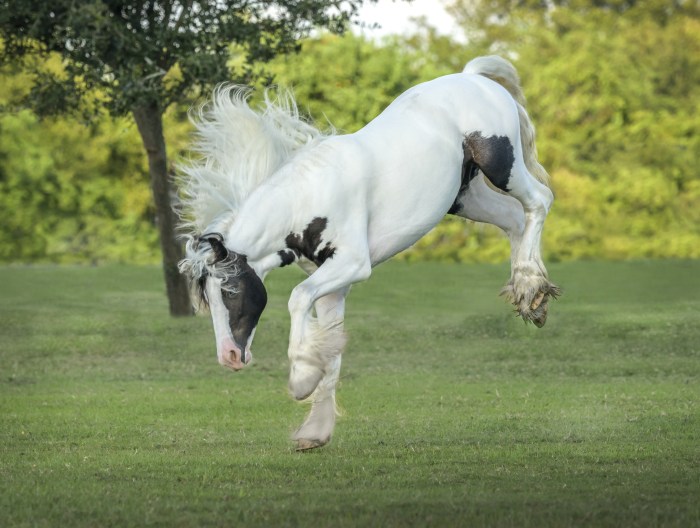
9. Those forelock feathers take some serious grooming though...
10. But who wouldn't love one of these horses?
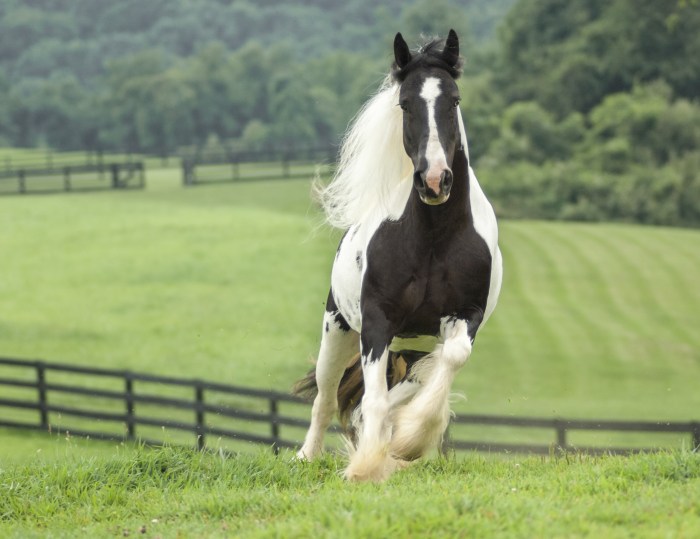
11. Some Gypsies have solid coats.
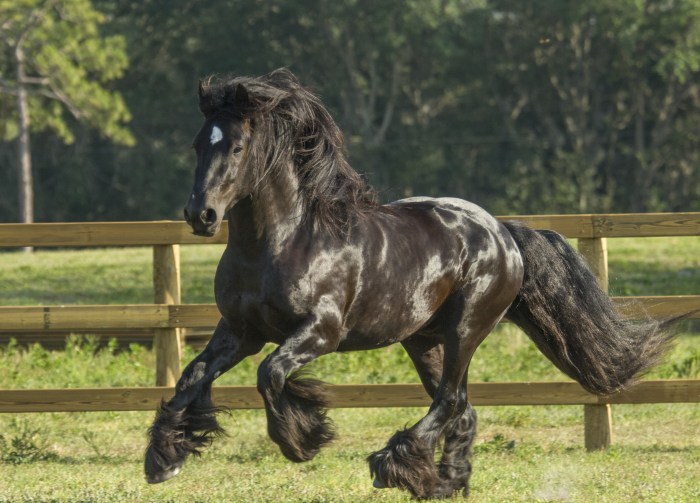
12. And others have amazing patterns.
13. Just look at that feathering.
The feathering is considered a "characteristic and decorative feature of the Irish Cob", but is not a requirement for registration.
14. Happy to be so gorgeous.
15. Powerful, beautiful, and stunning.

These horses look like they've just stepped out of a fairytale, taking breath away everywhere they go.
There are a number of breed shows in the United States. Many travelers and the romani people travel to the fair in traditional horse-drawn gypsy caravans and vardos.
Gypsy Cobs are shown and traded at traditional horse fairs, of which the Appleby Horse Fair is the largest in Europe.
In 2004, American photographer John S. Hockensmith traveled with and photographed a couple's journey to Appleby in bow-top living wagons!
If you're looking for more information, breed associations and societies formed in North America, Europe, Australia, and New Zealand are the Gypsy Vanner Horse Society, the Irish Cob Society, the Gypsy Cob and Drum Horse Association, the Gypsy Cob Society of America, the Gypsy Horse Registry of America, the Australasian Gypsy Horse Society, and the NZ Gypsy Cob Association.
You can discuss the breed standard with any of these organizations. Many breeders also sell Friesian horses as they share the same body style. Draft horses and Shire horses also share these body styles so do your research.
Have you ever been lucky enough to ride a Gypsy Vanner? Tell us in the comments below!
WATCH NOW: Endo the Blind Horse Is an Inspiration
